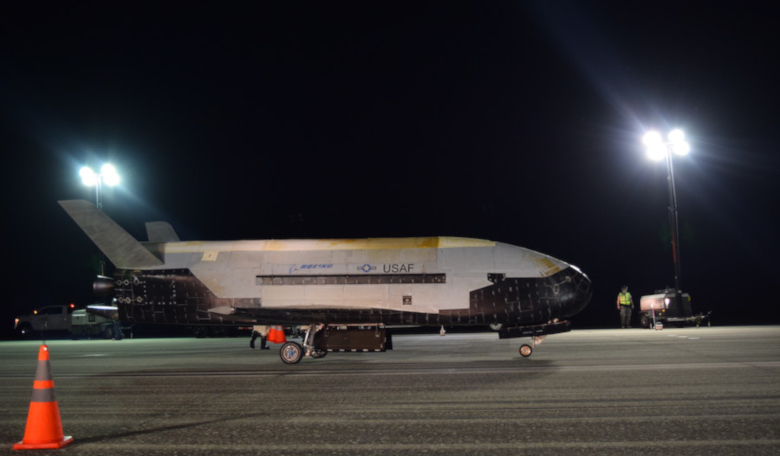On Sunday 27 October, the US Airforce announced that its X-37B Orbital Test Vehicle Mission 5 (OTV-5) successfully landed at NASA’s Kennedy Space Center Shuttle Landing Facility, having spent 780 days in space conducting on-orbit experiments.
The lengthy mission meant that the X-37B broke its own record by being in orbit for more than two years.
As of Sunday, the total number of days spent on-orbit for the entire test vehicle program is 2,865 days.
“The safe return of this spacecraft, after breaking its own endurance record, is the result of the innovative partnership between government and industry,” said Gen. David Goldfein, the Air Force chief of staff, in a statement.
Developed by Boeing Phantom Works, the reusable X-37B spaceplane is designed to launch on top of a conventional rocket; for this particular mission, the unpiloted OTV was lofted into space atop a SpaceX Falcon 9 rocket on 7 September, 2017.
The spaceplane is able to remain in space for years thanks to a power-generating solar array, that extends from its payload bay doors once the craft is in orbit.
But what exactly has it been doing up in space for two years?
Managed by the Air Force Rapid Capabilities Office, the X-37B program performs experimentation and concept of operations development for reusable space vehicle technologies in a long-duration space environment.
During this last mission the craft has successfully worked on Air Force Research Laboratory (AFRL) experiments including advanced thermal control system technologies for use in future satellites said Randy Walden, Air Force Rapid Capabilities Office director, “as well as providing a ride for small satellites.”
The AFRL leads the discovery, development and delivery of warfighting technologies for US air, space and cyberspace forces and as such has led to some to question whether the success of the X-37B means that the weaponisation of space is just around the corner.
Former Secretary of the Air Force Heather Wilson recently said that the X-37B’s strength was that it circles the Earth in “an orbit that looks like an egg.” This allows the spaceplane, when it is close to Earth in its egg-like orbit, to dip down into the atmosphere by using its wings and manoeuvring thrusters, so that it can turn where it is.
“Which means our adversaries don’t know – and that happens on the far side of the Earth from our adversaries – where it’s going to come up next,” Wilson said at the Aspen Security Forum in July according to Military.com. “And we know that drives them nuts. And I’m really glad about that.”
It is not only this ability of the X-37B’s to pop up somewhere unexpectedly that has given some cause for concern, but also that US Air Force alluded to the idea that the spaceplane has been deploying small satellites during its latest mission.
This has made some heads turn, as the US has not reported those deployments in its UN Registration Convention submissions, writes Harvard-Smithsonian astronomer Johnathan McDowell, via Twitter. If correct, this would be the first time that the US “has blatantly flouted the Convention,” he added.
Introduced by the UN in 1974, the Convention is based on the 1967 Outer Space Treaty, which is regarded as the basic international law of space, and requires that all objects launched into space must be registered “to the greatest extent feasible and practicable”.
Others have warned that “if the X-37B can be loaded with small satellites, it can also be loaded with weapons,” says Hong Kong-based military commentator Song Zhongping. “It may also be able to be fitted with robotic arms to capture other satellites that are in orbit,” Zhongping said.
The US Air Force have yet to reveal any details of any small satellites that may have been deployed during the top-secret mission and with a sixth foray into space scheduled to launch from CCAFS in 2020, no doubt the questions will continue regarding the spaceplane's true mission objective.











